The drill hall has been a part of British military and social life since the
1860s, when Corps of Rifle Volunteers constructed premises for drill, funded
by benefactors or public subscription.
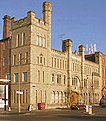 The
heyday of the drill hall began in the 1880s, following the Cardwell reforms
of the Army, in which the Rifle Volunteers were formed into Volunteer Battalions
of the County regiments to which they were affiliated.
The
heyday of the drill hall began in the 1880s, following the Cardwell reforms
of the Army, in which the Rifle Volunteers were formed into Volunteer Battalions
of the County regiments to which they were affiliated.
Many of the Senior Officers of the units were also local businessmen or landowners,
and funded not only the building of premises but the raising and equipping
of the units themselves. Other units raised funds for building by means of
the formation of limited companies, or public subscription and fundraising
events such as fêtes and bazaars.
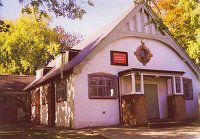 Further
changes in the development of the drill hall occurred following the disbandment
of the Volunteers and the formation under the Haldane reforms in 1908, of
the Territorial Force and the County Territorial Associations who provided
the administrative support for the units in their area. In Staffordshire
for example, a number of premises were built which provided shared accommodation
for infantry, artillery, engineer or medical units, and facilities for the
local Yeomanry units.
Further
changes in the development of the drill hall occurred following the disbandment
of the Volunteers and the formation under the Haldane reforms in 1908, of
the Territorial Force and the County Territorial Associations who provided
the administrative support for the units in their area. In Staffordshire
for example, a number of premises were built which provided shared accommodation
for infantry, artillery, engineer or medical units, and facilities for the
local Yeomanry units.
There is no such thing as a standard design of drill hall. Although most
premises followed the same basic principles of a large shed or hall, around
80 feet by 40 feet, 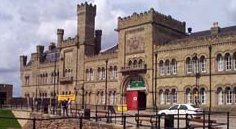 with
offices and stores attached, the frontages of the premises were generally
quite individual. From the crenellated stone toy-fort style found at Ardwick
in Manchester or Bury in Lancashire, to the more usual brick and tile buildings
found in sleepy market towns, the design was often at the whim of the architects.
Many premises had a dwelling-house attached for the caretaker, usually a
time-expired sergeant. Decoration of the frontages often included a regimental
device in stone or terracotta.
with
offices and stores attached, the frontages of the premises were generally
quite individual. From the crenellated stone toy-fort style found at Ardwick
in Manchester or Bury in Lancashire, to the more usual brick and tile buildings
found in sleepy market towns, the design was often at the whim of the architects.
Many premises had a dwelling-house attached for the caretaker, usually a
time-expired sergeant. Decoration of the frontages often included a regimental
device in stone or terracotta.
Not all units had drill halls, often sharing existing public premises like
town halls or, in a couple of instances, places of employment for work raised
units such as the South Midland Brigade of the Royal Field Artillery who were
raised and based at the Metropolitan Works in Saltley, Birmingham.
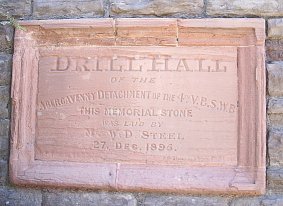 Although
primarily a building for military training, the drill hall provided a useful
space for other organisations and functions, including fetes and dances,
which provided funds for the upkeep of the hall. Many older people have
fond memories of social events held there.
Although
primarily a building for military training, the drill hall provided a useful
space for other organisations and functions, including fetes and dances,
which provided funds for the upkeep of the hall. Many older people have
fond memories of social events held there.
In later years, many drill halls passed into the ownership of local authorities,
to be used as leisure facilities, GPO sorting offices or telephone exchanges,
often replaced in later years by more modern premises for the new occupiers.
Many others were downgraded to cadet unit premises, with new purpose built
structures for the parent unit built alongside. Some passed into the private
sector to be used as engineering or stores buildings.
The current trend for the redevelopment of brownfield sites has caused the
number of demolitions to increase dramatically in the last few years. The
space provided by a drill hall yields a valuable space, often close to the
town centre, and these redundant buildings are often replaced by apartments
or houses. Often all that remains is a plaque or stone to mark the site.

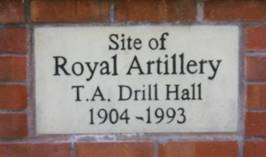
 Follow us on Twitter
Follow us on TwitterDrill
 Database
Database Memorabilia
MemorabiliaResources Glossary
Saving Halls Participate Contact What's New? Terms of Use